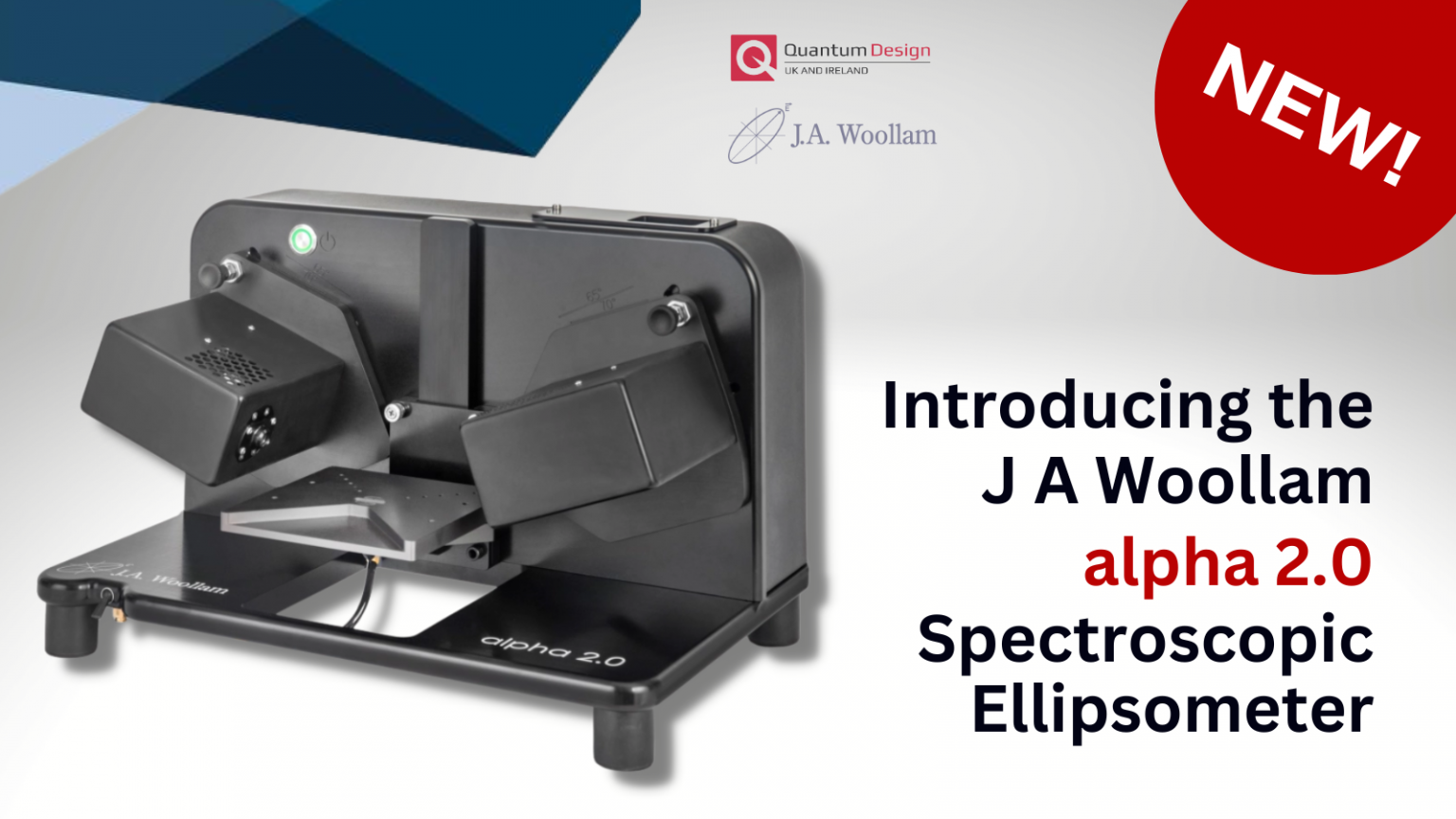J. A. Woollam introduces the alpha 2.0, the second generation of the alpha-SE, which was first developed in 2003 and was created to provide researchers with an ellipsometer that was budget-friendly, reliable, robust, and accurate for routine measurements of film thickness and refractive index.

Image Credit: Quantum Design UK and Ireland Ltd
Over the years, enhancements were added to the alpha-SE; adding multiple angles of incidence, adjusting the optical layout for improved data quality, and adding accessories. However, the underlying technology remained consistent. The alpha-SE was a step-scan, rotating-compensator instrument, which means a stepper motor moves the compensator to a position and holds it there while data is collected, then it moves to the next position, and so on. The step-scan approach met Woollam’s goals of being robust, reliable and accurate, but it needed to be faster. In addition, the alpha-SE used a third party spectrometer as part of the polarisation state detector. Although the detector wasn’t purpose-built for the ellipsometer, it performed well and still does an excellent job.
After a long run, Woollam thought it was time to enhance the underlying technology. The result of these updates is the alpha 2.0, which features the patented dual-rotation technology and thus joins the iSE and theta-SE ellipsometers.
These instruments are all part of the budget-friendly offerings, each designed for a specific market: the alpha 2.0 is for research customers, the iSE for in-situ applications, and the theta-SE for customers with uniformity mapping needs.
J. A. Woollam Company
The dual-rotation technology uses a rotating compensator before the sample and a rotating analyser after the sample. With dual-rotation, the instrument captures polarisation information from multiple optical orientations, which always provides high-accuracy measurements. The alpha 2.0 also provides 23 elements of the Mueller matrix in a single optical cycle, meaning Mueller matrix measurements can be obtained quickly without “stitching” multiple measurements together.
The new design of the alpha 2.0 also contains many of the features that made alpha-SE a great instrument, starting with the price. Woollam made sure to provide customers with a budget-friendly ellipsometer that’s reliable, robust and accurate.
One of the main differentiators between the alpha-SE and alpha 2.0 is the spectrometer, which is built on 35+ years of experience in spectrometer design for ellipsometry.
J. A. Woollam Company
The alpha 2.0 uses a QTH light source in combination with CCD detection to provide information over the visible spectral range with 190 wavelengths between 400 and 1000 nm. The thickness and refractive index can be determined for a variety of sample types, from simple transparent films to semi-absorbing films and anisotropic materials.
Many of the mechanical aspects of the instrument remain the same. For those familiar with the alpha-SE, you will notice the alpha 2.0, for the most part, looks the same. This is largely because Woollam are continuing with the manually adjusted multi-angle capability to be a beneficial feature because it enables sensitivity to material parameters for multi-layer stacks and complex materials, including absorbers and anisotropic materials. The additional sensitivity is, in part, derived from the change in path length that occurs at each angle as light travels through the film, as defined by Snell’s law. The multi-angle concept provides a benefit for the more complex samples.
- Easy-to-Use – Push-button operation is complemented by advanced software that takes care of the work for you.
- Powerful – Proven spectroscopic ellipsometer technology gives you both thickness and refractive index with much higher certainty than other techniques.
- Flexible – It works with your materials – dielectrics,
semiconductors, organics, and more.
- Affordable – A streamlined instrument created for research and development of simple samples.
- Fast – Simultaneous collection of 190 wavelengths for highspeed, multi-angle ellipsometry measurements.
Sample alignment features remain similar. With the alpha 2.0, the sample can simply be placed on the stage, and the signal will be maximised prior to measurement with no user-required adjustments. The goal in the design translated to a straightforward, fast, and reliable measurement process. Like its predecessor, the alpha 2.0 is a benchtop instrument with a small footprint, measuring 476 mm (width), 324 mm (depth), and 311 mm (height). It is lightweight and requires less than 1 amp at 100/240 VAC, so it should be easy to place on a lab table.